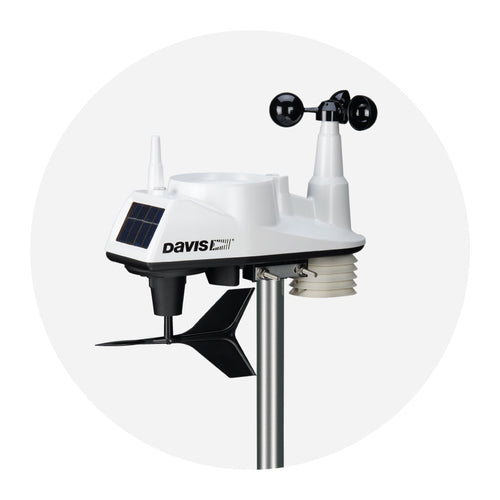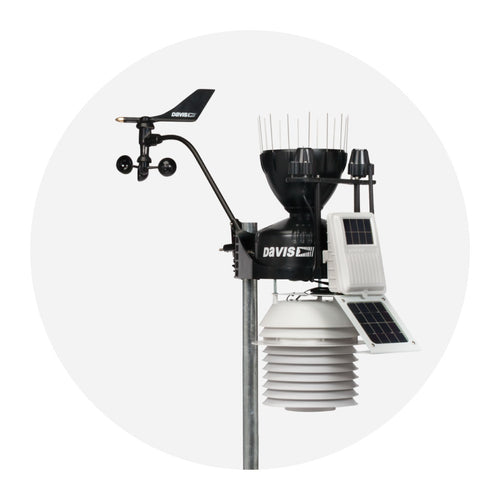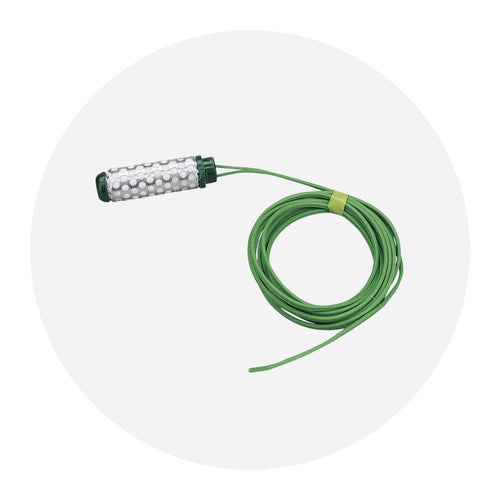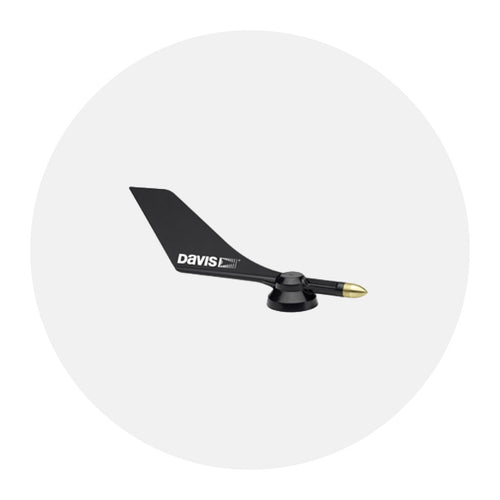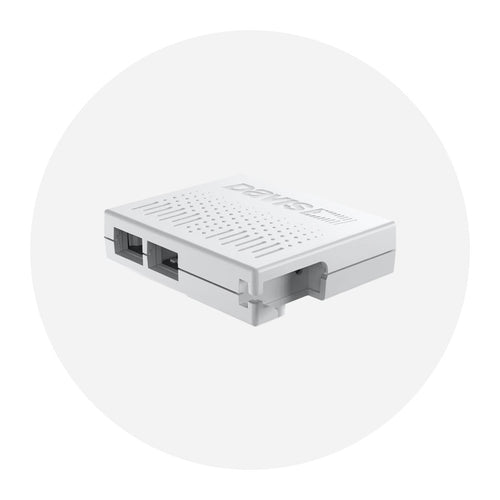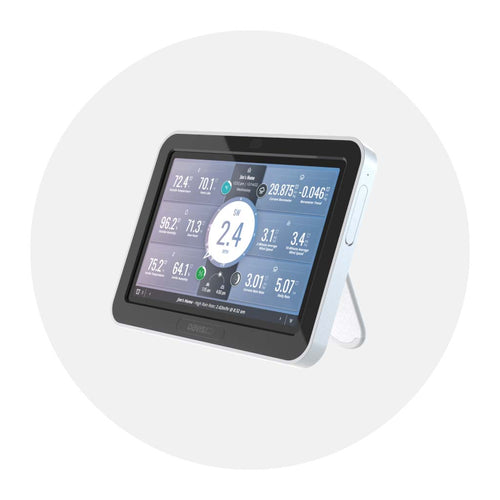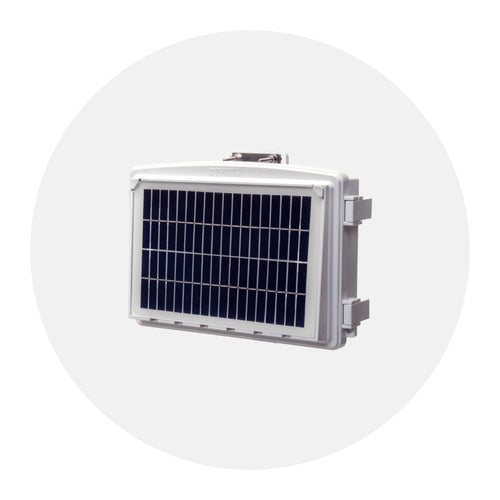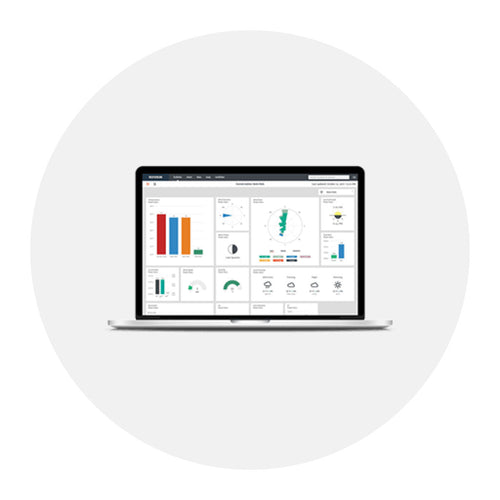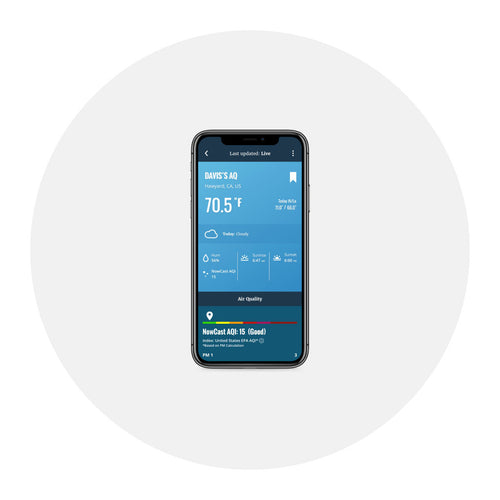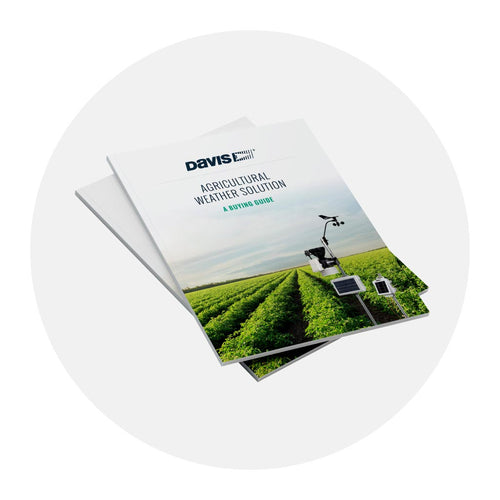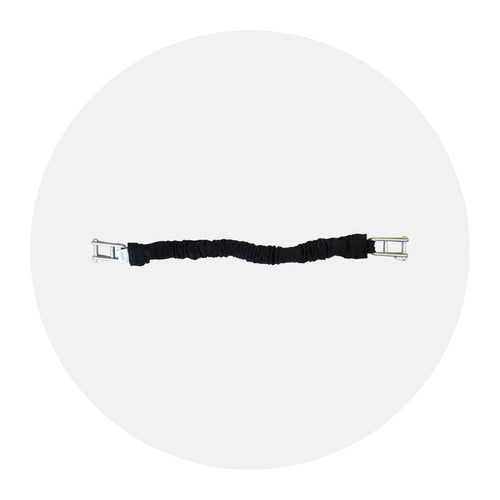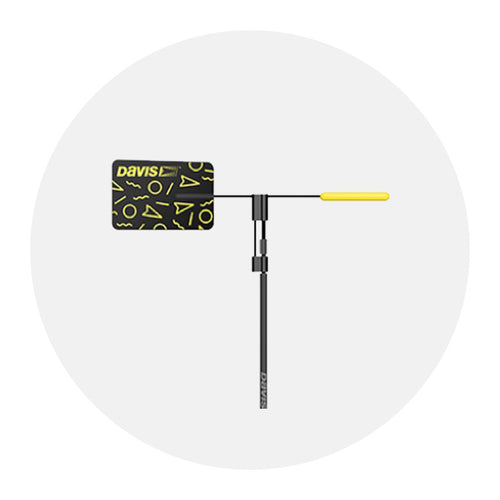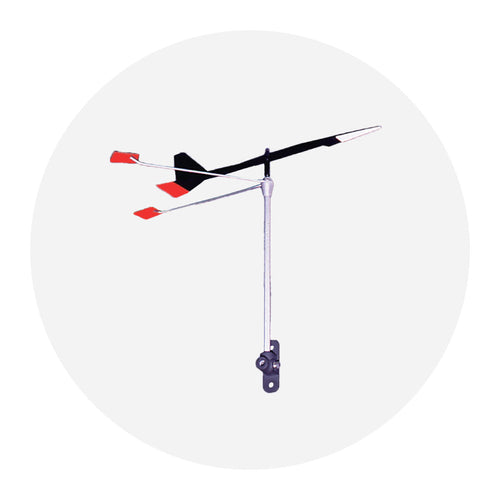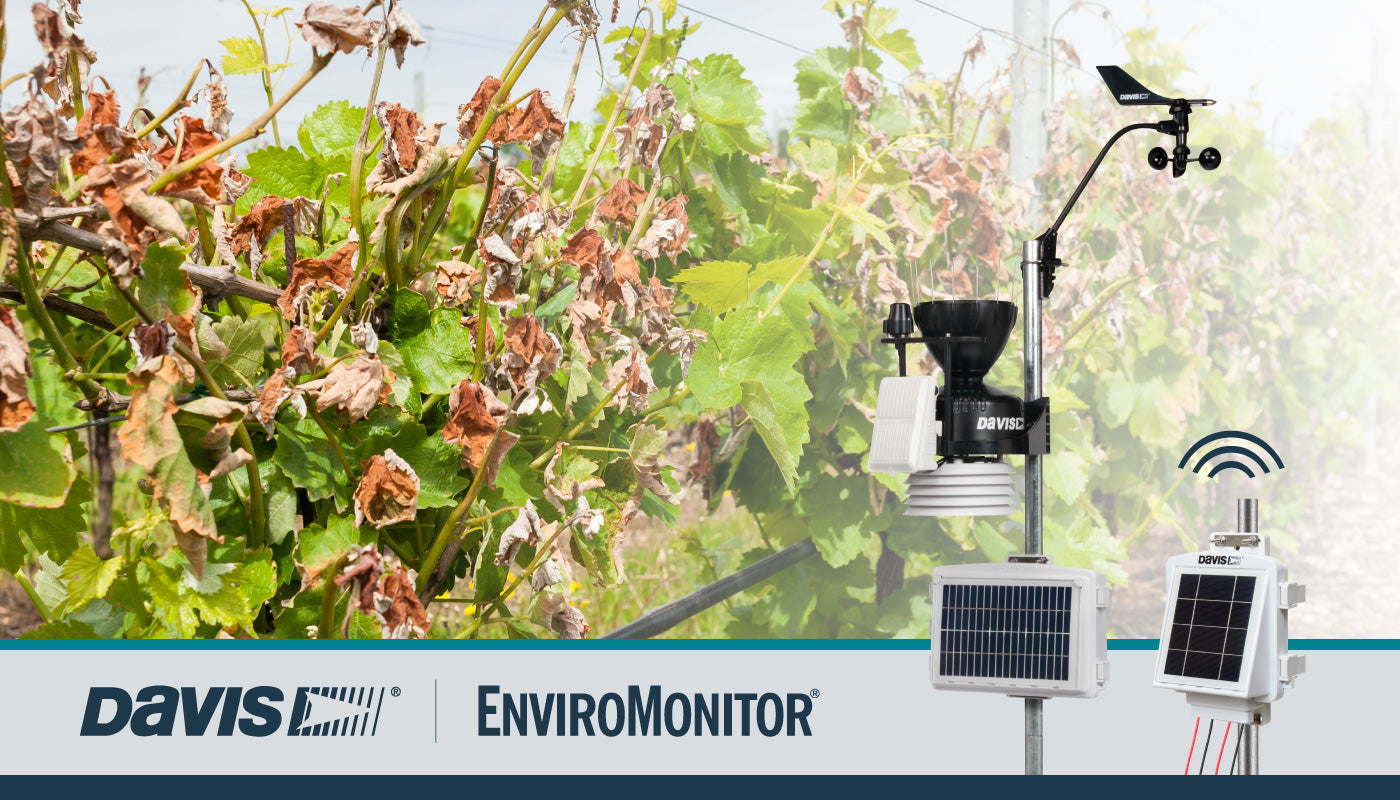
How to Minimize Crop Damage with Frost Forecasting
 While every part of the grower's active year holds specific challenges, one of the most destructive forces of nature can occur in autumn or spring: frost. A sudden drop in temperature can devastate plant tissues that are not yet “hardened.” Frost especially affects the soft actively growing parts of plant, such as flower and vegetative buds. With a Davis weather station and the powerful Mobilize app, growers can meet this challenge head on, before damage occurs.
While every part of the grower's active year holds specific challenges, one of the most destructive forces of nature can occur in autumn or spring: frost. A sudden drop in temperature can devastate plant tissues that are not yet “hardened.” Frost especially affects the soft actively growing parts of plant, such as flower and vegetative buds. With a Davis weather station and the powerful Mobilize app, growers can meet this challenge head on, before damage occurs.
Frost can be benign – like frost that forms on the surface of leaves like dew, then melts slowly. This kind of frost usually does no harm. Plants can withstand some freezing of water between cells, if it melts slowly. In fact, that process is necessary to “harden,” or acclimate, plants during winter. But ice crystals that form inside tissues can become destructive miniature daggers that wreak havoc on plant cells by rupturing the rigid cell walls. Repeated freezing and thawing or very rapid thawing can be particularly damaging.
Frost injury usually happens via two different and distinct weather phenomena: radiation freeze or advective freeze.
Plants, like everything else, lose heat via radiation to the atmosphere. On a calm, clear night following a cold day, plants sometimes lose more heat than they receive. A low temperature inversion can form, where cold air near the ground becomes trapped by warmer air above it. If the air temperature at the plant level is below, or even near, freezing, ice crystals can form inside the plant tissue. This is called a radiation freeze.
Freeze injury caused by advection occurs when an air mass with temperature below freezing moves in, displacing warm air. The plant temperature drops too, and ice crystals form.
Either way, when low temperatures do damage plants, whether by frost or freeze, the damage looks the same. Plants become limp, blackened, and distorted. Frost can kill some plants outright; sometimes the damage, especially to stems, might not be evident for weeks or even months.
With a Davis weather station and/or temperature sensors on EnviroMonitor Nodes installed in their fields, modern growers now have powerful tools in the battle against frost damage. Growers upload data to Davis’s WeatherLink.com via a data logger such as an EnviroMonitor Gateway. WeatherLink.com will literally text them when frost is a danger, 24/7. If their plants are susceptible to damage, the grower will have time to cover plants, apply extra mulch to retain heat near the surface, turn on blowers to prevent the accumulation of cold air, produce smoke to slow temperature drop, or even spray with water that will then release latent heat and prevent freezing of plant tissues inside.
 With Mobilize and WeatherLink mobile apps installed on their smartphones, growers and their teams have 24/7 access to this data. Mobilize focuses directly on the needs of growers, offering frost reports for each specific field and crop. Within the Mobilize app, growers set temperature thresholds specific to their crops. This threshold varies by the crop -- corn can be killed by low temperatures that oats would tolerate fairly easily. With Mobilize’s flexible “Field View,” growers can set thresholds and view reports for each field, or each crop, they manage.
With Mobilize and WeatherLink mobile apps installed on their smartphones, growers and their teams have 24/7 access to this data. Mobilize focuses directly on the needs of growers, offering frost reports for each specific field and crop. Within the Mobilize app, growers set temperature thresholds specific to their crops. This threshold varies by the crop -- corn can be killed by low temperatures that oats would tolerate fairly easily. With Mobilize’s flexible “Field View,” growers can set thresholds and view reports for each field, or each crop, they manage.
Mobilize also offers reports on other crucial growing topics including irrigation, chilling and growing degree days, and pest threat.
|
|
|
A grower who needs to know about the threat of frost can set up an EnviroMonitor system quickly and easily. The basic system, which could be expanded to include Nodes and any of a long list of Davis and third-party sensors, would include:
Wireless Vantage Pro2 GroWeather sensor suite: $900
EnviroMonitor IP Gateway: $650
An annual service plan will also be required.
The word FROST is still potent enough to send shivers of fear down the spines of even the most seasoned grower. But those who have Mobilize on their smartphone by their bed can rest assured that, tonight, frost will not get into their fields without warning.
In the face of escalating environmental risks, AEM is the essential source for insights on weather, climate, lightning, floods, wildfires, water management, and more.
Learn more about AEM and all of our solutions here.


